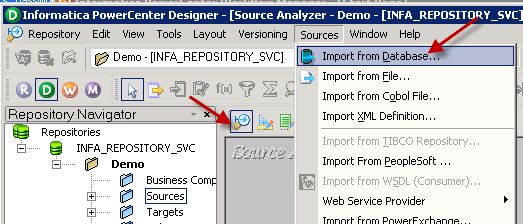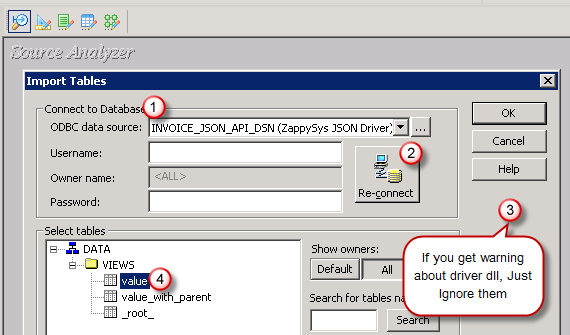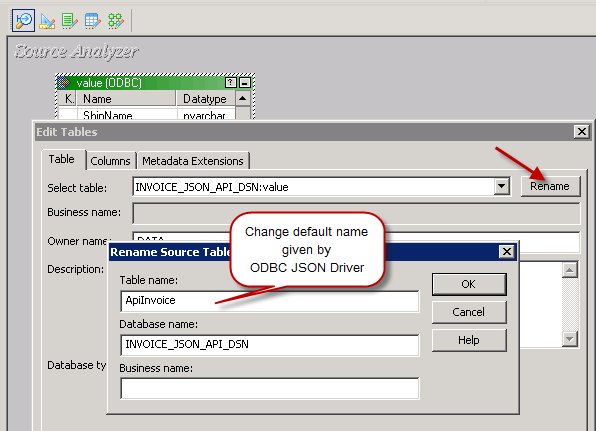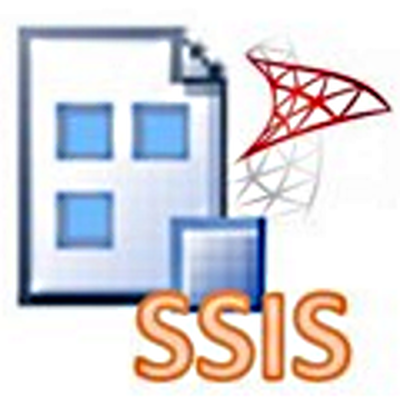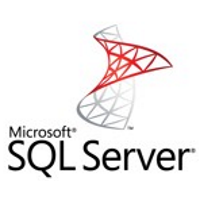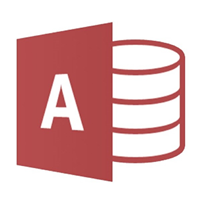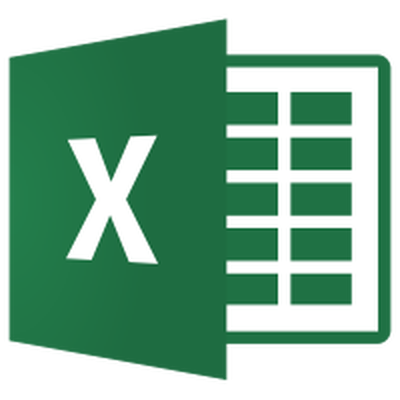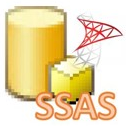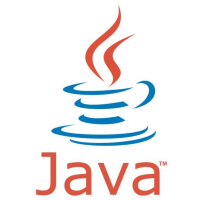Gmail Connector for Informatica How to Get List of Messages for a Specific User
Introduction
In this article we will delve deeper into Gmail and Informatica integration, and will learn how to get list of messages for a specific user. We are continuing from where we left off. By this time, you must have installed ODBC PowerPack, created ODBC Data Source, and configured authentication settings in your Gmail account .
So, let's not waste time and begin.
Use Query Builder to generate SQL query
-
The first thing you have to do is open Query Builder:
ZappySys API Driver - GmailRead / search Gmail messages, download attachments, send mail and more using Gmail REST API.GmailDSN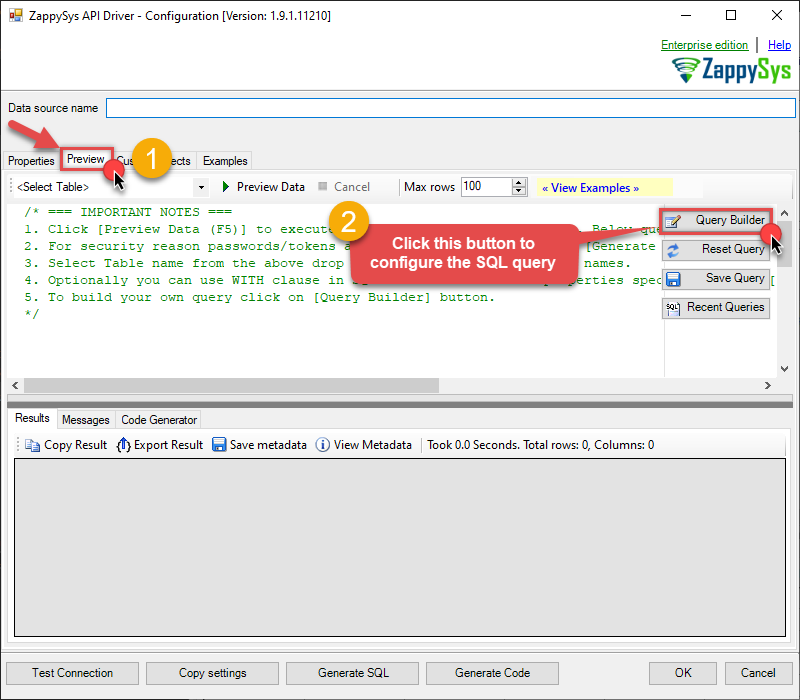
-
Then simply select the Get List of Messages for a Specific User endpoint (action).
-
Continue by configuring the Required parameters. You can also set optional parameters too.
-
Move on by hitting Preview Data button to preview the results.
-
If you see the results you need, simply copy the generated query:
-
That's it! You can use this query in Informatica.
Let's not stop here and explore SQL query examples, including how to use them in Stored Procedures and Views (virtual tables) in the next steps.
SQL query examples
Use these SQL queries in your Informatica data source:
How to Get all messages
SELECT * FROM MessagesHow to Get all messages for a specified user
Get all messages for a specified user id (mailbox). Thi is very slow row by row operation. For each message one API call is invoked so do not try this way unless you have to.
SELECT * FROM Messages
LIMIT 10 --This will only fetch first 10 messages from the result (Fetching all messages can be very slow (Rowbecuase its Row-By-Row operation)
WITH (UserID='me')
--WITH (UserID='firstname.lastname@domainname.com')How to Get all messages with search condition(s)
This example shows how to use search condition(s) to filter mails for search operation. For more examples refer https://support.google.com/mail/answer/7190
SELECT *
FROM Messages
--Use WITH clause --OR-- Key column(s) in WHERE clause. If you use Id in Where clause then Search parameter is ignored
--WHERE [Id] = '18fb7747b0136726'
WITH(
Search='after:<<yearstart+1d|~|yyyy/MM/dd,FUN_TO_DATE>> before:<<today-1d|~|yyyy/MM/dd,FUN_TO_DATE>>' --search for mail sent between some dates (after year start plus one day and before yesterday (i.e. today-1d))
-- Search='after:2024/01/31 before:2024/05/25' --use of static date
--for more examples refer https://support.google.com/mail/answer/7190
-- Search='FREE PRODUCT' --search example for=> has words anywhere in the subject or body
-- Search='"FREE PRODUCT"' --search example for=> has exact phrase anywhere in the subject or body
-- Search='subject:FREE PRODUCT' --search example for=> has subject (contains any word)
-- Search='subject:(FREE PRODUCT)' --search example for => has subject (contains exact phrase)
-- Search='Rfc822msgid:<008601dae391$fda78bf0$f8f6a3d0$@zappysys.com>' --search example for => Search by Rfc822MessageID column (Alternate Message ID for searching - you can find from get_messages or get_message endpoint output
-- Search='to:david' --search example for => to (name)
-- Search='to:david.smith@gmail.com' --search example for => to (email)
-- Search='from:david' --search example for => from (name)
-- Search='from:david.smith@gmail.com' --search example for => from (email)
-- Search='from:(Platform Notifications) OR from:(no-reply@accounts.google.com) ' --search example for => from (name or email)
-- Search='cc:david' --search example for => cc (name)
-- Search='bcc:david' --search example for => bcc (name)
-- Search='is:unread AND subject:(Share request for)' --search example for => multiple conditions (AND)
-- Search='is:unread OR subject:(Share request for)' --search example for => multiple conditions (OR)
-- Search='from:someuser@example.com' --search example for => from sender=from:someuser@example.com
-- Search='from:a@company.com OR from:b@company.com' --search example for => from sender (OR)
-- Search='from:amy' --search example for => from sender by name=from:amy
-- Search='from:amy OR from:bob ' --search example for => from sender by name (OR)
-- Search='has:attachment' --search example for => has attachment=has:attachment
-- Search='larger:10M' --search example for => has attachment (larger than 10MB)
-- Search='smaller:10M' --search example for => has attachment (smaller than 10MB)
-- Search='smaller:10M' --search example for => has attachment (smaller than 10MB)
-- Search='1024' --search example for => size (exact bytes)
-- Search='unread=is:unread' --search example for => is unread=is:unread
-- Search='is:read' --search example for => is read=is:read
-- Search='after:2004/04/16' --search example for => date after=after:2004/04/16
-- Search='before:2004/04/16' --search example for => date before=before:2004/04/16
-- Search='older_than:2d' --search example for => age older than (2days)
-- Search='older_than:4y' --search example for => age older than (4years)
-- Search='newer_than:2d' --search example for => age newer than (2days)
-- Search='newer_than:4m' --search example for => age newer than (4months)
-- Search='from:someuser@example.com rfc822msgid:<008601dae391zzzzzzz> is:unread' --search example for => from specific sender with specific message id(RFC822) and unread emails only=from:someuser@example.com rfc822msgid:<somemsgid@example.com> is:unread
-- Search='in:sent after:2014/01/01 before:2014/02/01' --search example for => sent date range (static dates)
-- Search='in:sent after:<<yearstart-1day+22hour|~|yyyy/MM/dd,FUN_TO_DATE>> before:<<today-1day|~|yyyy/MM/dd,FUN_TO_DATE>>' --search example for => sent date range (dynamic dates). You can use keywords like now,today,yesterday,monthstart,monthend,yearstart,yearend,weekstart,weekend along with operator + / - [hour,minute,second,day,month,year]
)
get_messages endpoint belongs to
Messages
table(s), and can therefore be used via those table(s).
Stored Procedures and Views
Create Custom Stored Procedure
You can create procedures to encapsulate custom logic and then only pass handful parameters rather than long SQL to execute your API call.
Steps to create Custom Stored Procedure in ZappySys Driver. You can insert Placeholders anywhere inside Procedure Body. Read more about placeholders here
-
Go to Custom Objects Tab and Click on Add button and Select Add Procedure:

-
Enter the desired Procedure name and click on OK:

-
Select the created Stored Procedure and write the your desired stored procedure and Save it and it will create the custom stored procedure in the ZappySys Driver:
Here is an example stored procedure for ZappySys Driver. You can insert Placeholders anywhere inside Procedure Body. Read more about placeholders here
CREATE PROCEDURE [usp_get_orders] @fromdate = '<<yyyy-MM-dd,FUN_TODAY>>' AS SELECT * FROM Orders where OrderDate >= '<@fromdate>';
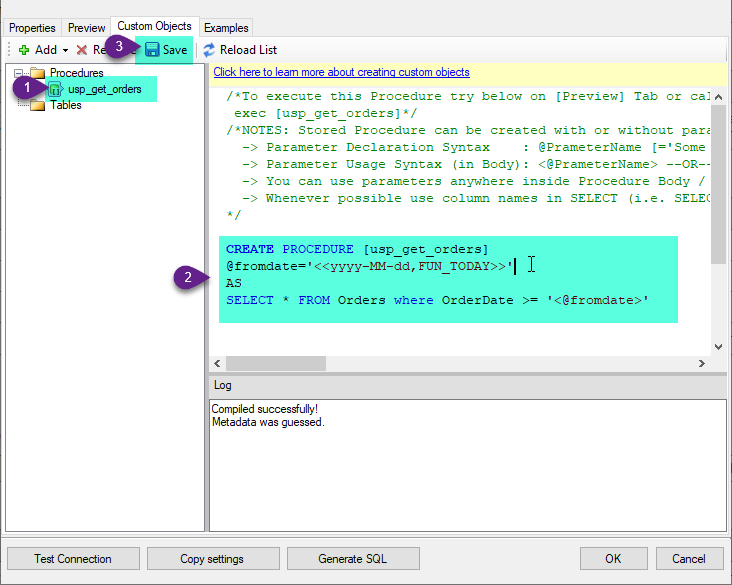
-
That's it now go to Preview Tab and Execute your Stored Procedure using Exec Command. In this example it will extract the orders from the date 1996-01-01:
Exec usp_get_orders '1996-01-01';
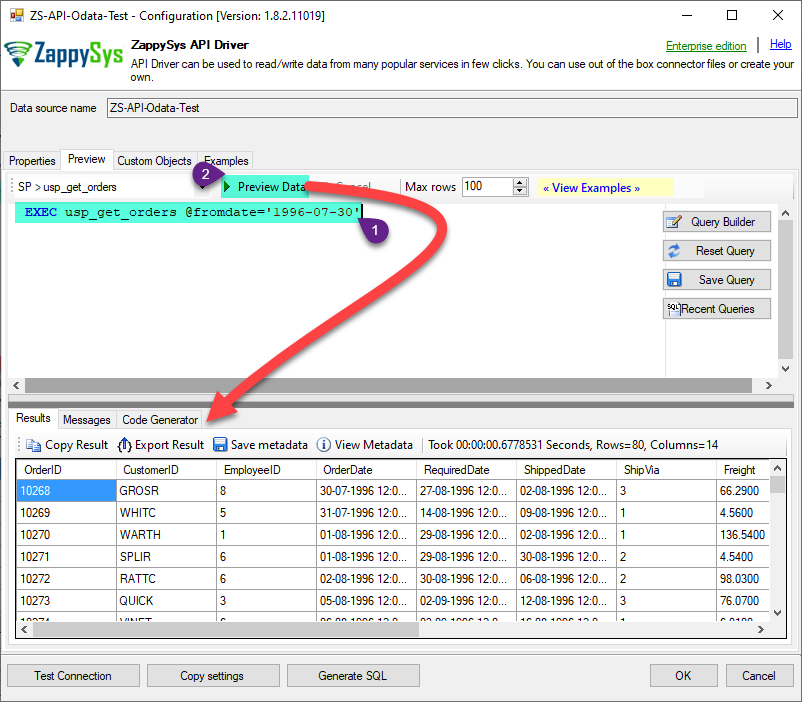
Create Custom Virtual Table
ZappySys API Drivers support flexible Query language so you can override Default Properties you configured on Data Source such as URL, Body. This way you don't have to create multiple Data Sources if you like to read data from multiple EndPoints. However not every application support supplying custom SQL to driver so you can only select Table from list returned from driver.
If you're dealing with Microsoft Access and need to import data from an SQL query, it's important to note that Access doesn't allow direct import of SQL queries. Instead, you can create custom objects (Virtual Tables) to handle the import process.
Many applications like MS Access, Informatica Designer wont give you option to specify custom SQL when you import Objects. In such case Virtual Table is very useful. You can create many Virtual Tables on the same Data Source (e.g. If you have 50 URLs with slight variations you can create virtual tables with just URL as Parameter setting.
-
Go to Custom Objects Tab and Click on Add button and Select Add Table:

-
Enter the desired Table name and click on OK:
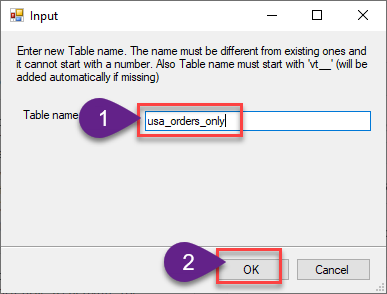
-
And it will open the New Query Window Click on Cancel to close that window and go to Custom Objects Tab.
-
Select the created table, Select Text Type AS SQL and write the your desired SQL Query and Save it and it will create the custom table in the ZappySys Driver:
Here is an example SQL query for ZappySys Driver. You can insert Placeholders also. Read more about placeholders here
SELECT "ShipCountry", "OrderID", "CustomerID", "EmployeeID", "OrderDate", "RequiredDate", "ShippedDate", "ShipVia", "Freight", "ShipName", "ShipAddress", "ShipCity", "ShipRegion", "ShipPostalCode" FROM "Orders" Where "ShipCountry"='USA'

-
That's it now go to Preview Tab and Execute your custom virtual table query. In this example it will extract the orders for the USA Shipping Country only:
SELECT * FROM "vt__usa_orders_only"
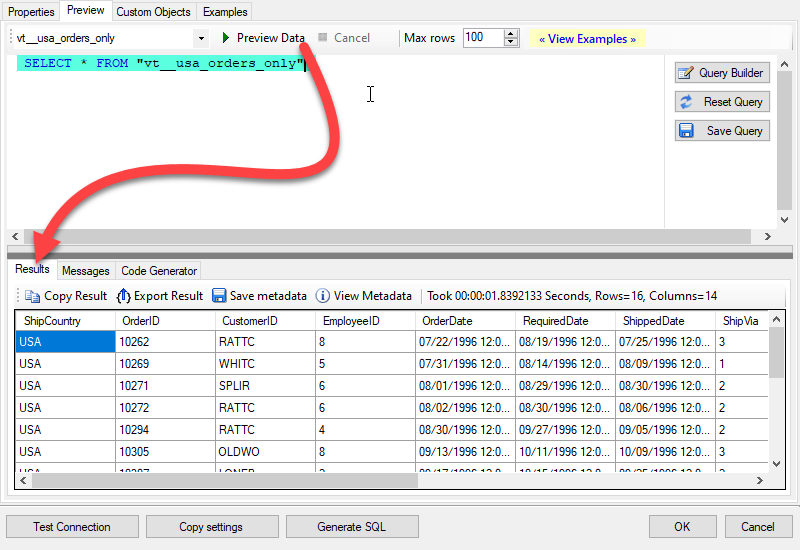
Get List of Messages for a Specific User in Informatica
-
Open Informatica Mapping Designer (Click [D] icon)
-
Click on Source Icon to switch to Sources designer
-
From the top menu > Click on Sources > Import from Database …
-
Select ODBC data source from the dropdown (Find out DSN we created earlier to use as JSON Source)
-
Click Connect button to get a list of tables. Any array node is listed as a table. Also, you will see array node with parent columns (e.g. value_with_parent). You may get some warning like below but they are harmless so just ignore by clicking OK.
DLL name entry missing from C:\Informatica\PowerCenter8.6.1\client\bin\powrmart.ini Section = ODBCDLL Entry = ZappySys JSON Driver
—————————————————-
Using EXTODBC.DLL to support ZappySys JSON Driver. For native support of ZappySys JSON Driver make an entry in the .ini file. - Select Table you wish to get (You can filter rows by custom SQL query. We will see later in this article how to do)
- Optionally once table structure is imported you can rename it
More actions supported by Gmail Connector
Learn how to perform other actions directly in Informatica with these how-to guides:
- Download Message Attachments (With search condition)
- Get a Specific Attachment included in a Specific Message for the Current User
- Get a Specific Message for a Specific User
- Get a Specific Message for the Current User
- Get labels
- Get List of Messages for the Current User
- Get message attachment for user
- Get Message Attachments (With search condition)
- Send a New Message for the specified User
- Make Generic API Request
- Make Generic API Request (Bulk Write)


